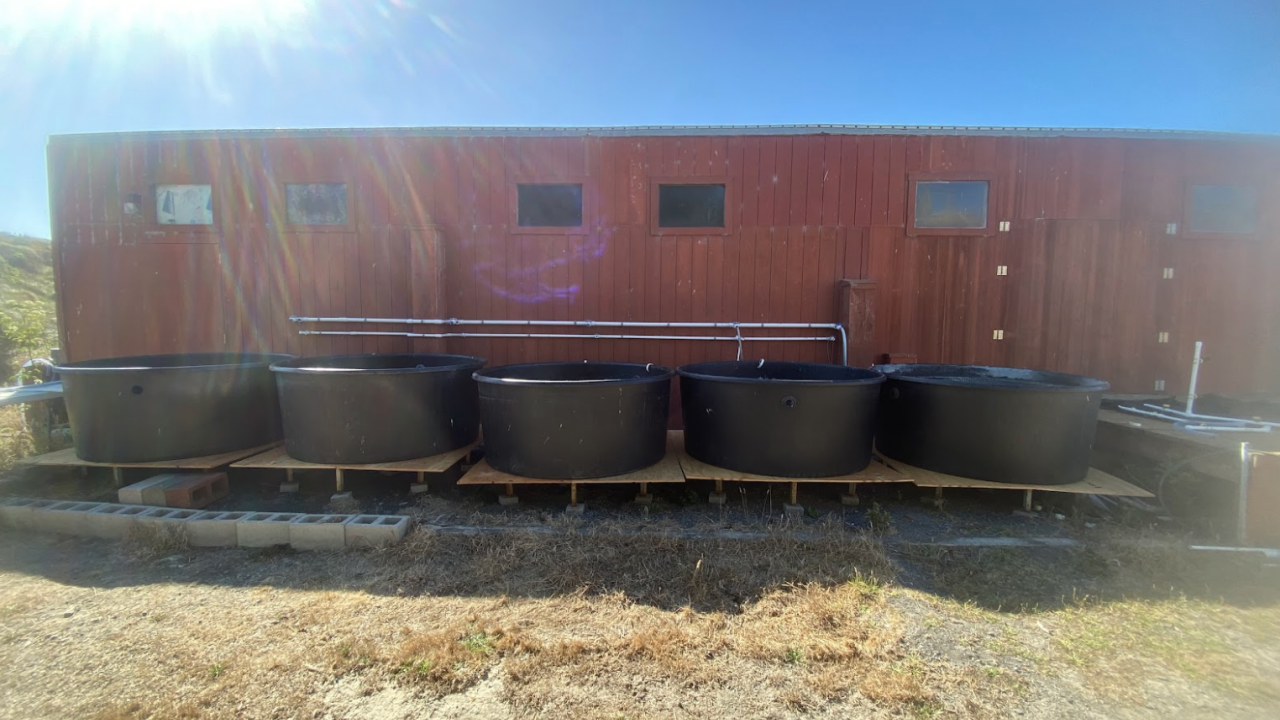
My Time at the Bodega Marine Lab
An SRJC-BML Internship Story
My name is Keith Mo. I am a third-year Biochemistry student at Santa Rosa Junior College (SRJC), and I plan to transfer to UC Davis in the fall of 2026. This summer, I had the privilege to work with Dr. Sara Boles in Dr. Jackson Gross’s lab at the Bodega Marine Lab (BML). This was my first internship and my first time in any sort of research setting, and so I came into it eager to familiarize myself with this new world and gain experience to guide my path in an academic setting.
My time at BML was spent working with Dr. Boles on researching abalone (Haliotis spps.) reproduction and larval success. Dr. Boles has spent her career working with California abalone, investigating the effects of climate change factors on developing larval and juvenile abalone. More recently, Dr. Boles has developed ultrasonography techniques to analyze gonad maturation to use as a predictor of spawning success. Currently, her studies aim to identify the best practices to enhance endangered black abalone ( H. cracherodii) conservation in support of the United States Navy Pacific Command Fleet’s commitment to preservation and restoration of this species using cultured red abalone (H. rufescens) as a surrogate. In some of these experiments, Dr. Boles and her research group seek to identify the impacts that changing climate conditions have on abalone reproduction and subsequent larval success.
The experiment I had the pleasure of working on this summer falls at an intersection between two ongoing projects: a USDA-funded project to grow dulse as a commodity crop in the US, and one by the US Navy (described above) for the conservation and restoration of endangered black abalone.
During this internship, I was able to help with the preparation for the upcoming study. I cleaned and labeled tanks for the abalone, as well as cleaned and re-leveled the vats in which the dulse would be grown. I also had the unique opportunity to ultrasound some abalone, which was the highlight of my time at BML.
Because of the project timeline, my time at BML would end before we received any abalone or kelp. While that meant I wouldn’t be running any tests or analyzing data, it gave me a clearer picture of what working in a lab is really like, and I learned the importance of adaptability and flexibility. Throughout my eight weeks, we had to pivot frequently, from bigger issues like time conflicts preventing us from obtaining the abalone and dulse, to small inconveniences such as being unable to find a drill to work on plumbing. My time working with Dr. Boles showed me that research is rarely ever as straightforward as I had envisioned. Thus far, my experience in a lab has been exclusively in classrooms, where all the materials are in place and you follow instructions to perform a cookie-cutter experiment. While that is great for learning how to use machines or understanding concepts, it doesn’t reflect the true nature of running an experiment.
In addition to lab work, I attended weekly professional development meetings as well as attended talks and meetings held at BML, all of which I benefited a lot from. I learned about the importance of cultivating mentor-mentee relationships, was introduced to academic structure and lab culture, and practiced elevator pitches to form new connections. I had the opportunity to sit in on scientific talks and lab meetings, giving me a better picture of the collaborative nature of science. I leave this internship experience with a clearer idea of what it means to do research, what to expect, and most importantly, a foundation and knowledge from which I can use to guide my future endeavors.
About the Program:
The SRJC-BML Internship Program provides summer research opportunities for Santa Rosa Junior College students at the Bodega Marine Laboratory.
